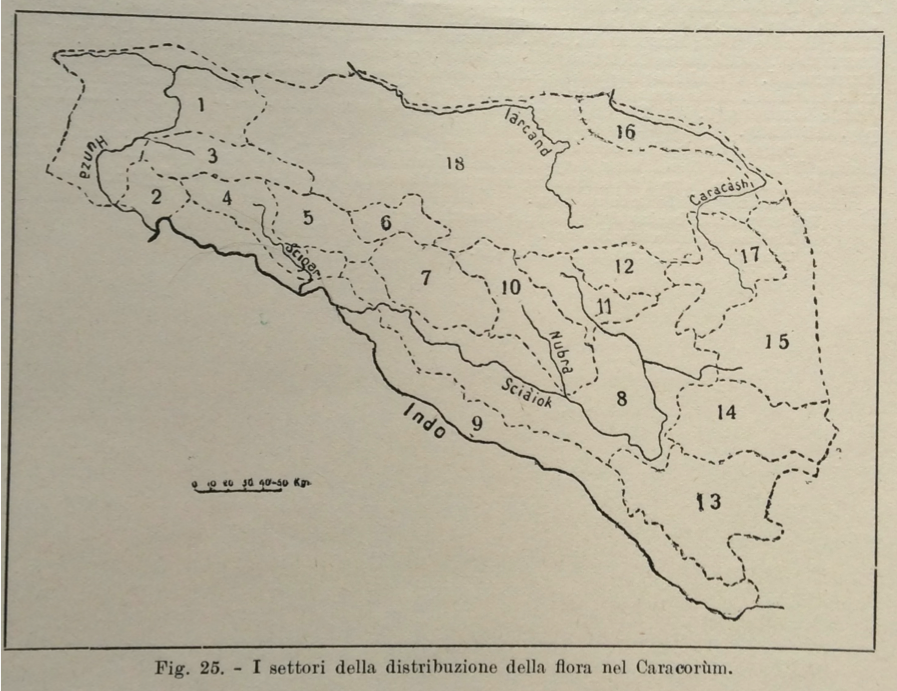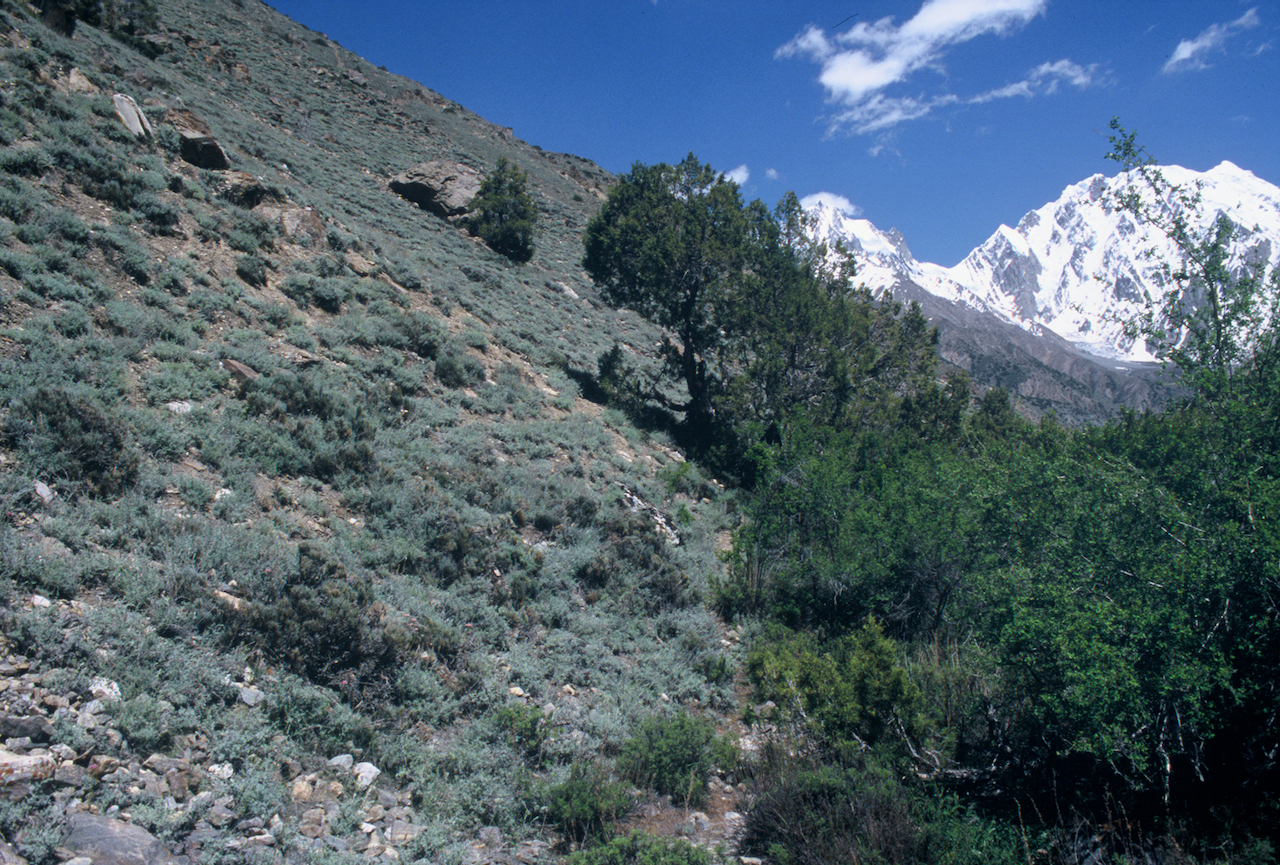
Overview:
The Karakoram Historical Database is a sortable table that documents over 500 species or taxa that were sampled during a series of Italian-led Expeditions during the early 1900’s. The main source is a 1913-14 Italian De Filippi expedition led by botanists Dainelli and Olinto Marinelli recorded in an Italian volume (Pampanini 1930; 1933; see Fig for book cover) that has remained untranslated. The database and ancillary information was compiled, digitized, and translated from italian using this source by Hewitt.
The archival document described herein represents a detailed account of species information compiled during the Dainelli expeditions in 1913-14 as well as taxonomic records collected by previous explorers in the region, including the famous Schlagintweit brothers, and other European and British expeditions. The archive provided information on the geography of species sightings, including species upper elevation limits for many, and presence in specific regions (valleys and highlands) throughout the Karakoram.

One of the goals of this research is to use the information recorded over 100 years ago to examine long term changes in altitudinal range limits by comparison with modern (2016 and later) surveys conducted by N Hewitt and others.
The 1913-14 expeditions directed by Dainelli, with Marinelli (Pampanini 1930) was followed by a 1930 expedition led by Dainelli (in Pampanini 193e) which added another 46 species and varieties with upper limits, to the earlier, 1913-14 record. It provided upper limits of several species, and for 15 of these, it indicated raised upper limits by between 10 to 100m. We have provided this information in the table, but suggest that the 1913-14 limits should be used for consistency since is possible that the later date may have a response to global carbon climate forcing.
Sortable database:
Go to the: Historical Database for Karakoram Flora
Information
The database can be sorted by any of the column types to rank, e.g, species by their upper elevation limit, or alphabetically, by their latin names. It is not currently searchable by keyword but a searchable version is available on the Scratchpads Biodiversity Online website.
The first four columns in the database provide taxonomic information, beginning with Family, then nomenclature from the historical source (Pampanini, 1930), followed by nomenclature resolved for the taxa from two leading authorities for the region, Tropicos’ e-Flora of Pakistan (Pakistan Plant Database) and the Plant List. The fifth column provides upper elevation limit (in metres above sea level) for each taxa from the historical sources, if available (both expeditions in 1913-14; 1930), and is followed by the a category about the global geographical provenance of that taxa (e.g., Geographic Realm), as indicated in the historical source. Finally, information about each species’ regional occurrence in valleys and highlands of the Karakoram is provided (columns 12 +). Presence (as determined by sightings in those valleys/regions) is indicated with a “1” in those columns. The numbers in the column headings (e.g., “5- Braldu Valley/V. Braldu”) correspond to the following mapped locations as indicated in Dainelli and Marinelli (1928) Fig 25.

Some limitations of the data:

While this treasure-trove of biogeographical information about Karakoram plant species has much to offer, in particular, providing historical records of species composition and the upper elevation limits for most species, it has certain limitations. Technology to indicate the precise Geographical Coordinates for species sighted was not easily available to expeditioners, though local and regional occurrence is provided (see last several columns of the database); Further, the early explorers were glaciologists (the Schlagintweits) or physical scientists focussed on collecting a wide range of information about geomorphology, terrain and glaciers and their routes through the mountains were aimed at accessing and working in and around permanent ice limits. Thus historical surveys do appear to have been systematic with respect to vegetation type, since ecology was potentially a secondary concern of their research. Finally, aspect (north vs. south) is a major control on species distributions in the Karakoram — species-rich alpine meadow associations are largely restricted to more mesic north-facing aspects where sun exposure is reduced in this otherwise semi-arid region (see Fig 4.). Yet the explorer records did not indicate aspect, and based on the floristic composition reported, it appears that many of the records are derived from xeric, south-facing aspects or rocky, exposed terrain.
References:
——–
NOTES ON THE DATABASE:
